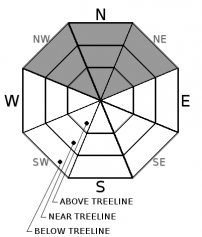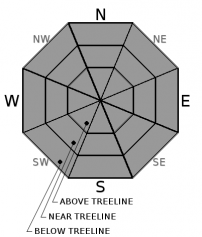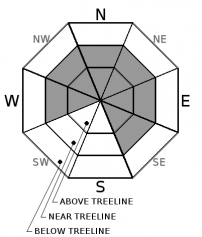| Tuesday | Tuesday Night | Wednesday | |
|---|---|---|---|
| Weather: | Cloudy with snow and rain showers in the morning. Rain and snow showers likely in the afternoon. Snow level 8000 ft. | Mostly cloudy with snow and rain showers likely in the evening. Rain and snow decreasing after midnight. Snow level 7500 ft. | Mostly cloudy with a slight chance of snow showers. Snow level 7000 ft. |
| Temperatures: | 38 to 43 deg. F. | 25 to 30 deg. F. | 39 to 44 deg. F. |
| Mid Slope Winds: | Southeast | West | West |
| Wind Speed: | 10 to 15 mph with gusts to 40 mph in the morning decreasing in the afternoon | Light winds increasing to 10 to 15 mph with gusts to 35 mph after midnight. | 10 to 15 mph with gusts to 40 mph |
| Expected snowfall: | Rain: .1 to .25 in. | Snow up to 1 | Rain: up to .1 in. | Snow: up to 1 | 0 to trace |
| Tuesday | Tuesday Night | Wednesday | |
|---|---|---|---|
| Weather: | Cloudy with snow showers in the morning then snow showers likely in the afternoon. Snow level 8000 ft. | Mostly cloudy with snow showers likely. Snow level 7500 ft. | Mostly cloudy with a slight chance of snow showers. Snow level 7000 ft. |
| Temperatures: | 35 to 40 deg. F. | 23 to 28 deg. F. | 35 to 40 deg. F. |
| Ridge Top Winds: | South shifting to the southwest in the afternoon | West | West |
| Wind Speed: | 20 to 30 mph with gusts to 55 mph decreasing to 10 to 15 mph with gusts to 25 mph in the afternoon | 15 to 20 mph with gusts to 30 mph increasing to 20 to 30 mph with gusts to 50 mph after midnight | 20 to 35 mph with gusts to 65 mph |
| Expected snowfall: | 1 to 3 | up to 1 | 0 to trace |





























